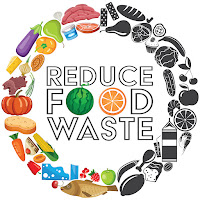
Some years later, I realized that my contribution to throwing away perfectly edible food is destructive to our environment. The food we throw away rots in our landfill. It creates greenhouse gases and pollutes our air. Throwing out good food is also a waste of everything that goes into growing or making food, such as land, water, and energy, things we cannot afford to waste. I also think it’s a slap in the face to all those around us who are hungry and doing their best to survive. Who’s idea was it when starting a new diet Step 1 is to throw away edible food!
Today, I am revisiting a low-carb lifestyle. I believe in the positive health markers eating low-carb offers. Also, I remember how good I felt (brain clarity, fasting energy, low blood sugars, weight loss) when I ate low-carb. However, this second time around, instead of going all-in and throwing away good food, I have introduced the following as my contribution to avoiding food waste:
1. I made it my goal to eat the high-carb foods in my pantry & fridge. If I eat something out of my diet, I pay attention to the nutritional facts on the labels. I keep track of my macros (proteins, fats, & carbs) and know if I need to cut my carb intake without any noticeable side effects.3. I also opt out of my low-carb days (20g) with lower-carb days <100g. When I started keeping track of my carb count, I averaged ~145g of carbs per day! Going from a high-carb diet of 145g to 20g is painful due to keto flu, headaches, fatigue, and cravings. However, I know that my overall goal is (100% low-carb), so it does not upset me to eat the remaining food I bought.
In conclusion, I’ve noticed that by using the methods above, I am ridding my house of those darn high-carb foods and not contributing to food waste and landfill pollution. Each time I finish a tasty but undesired high-carb item, I notice less clutter in my fridge & pantry and better organization. I also started composting eggshells, coffee grounds, and veggie bits. Being more aware has stopped my overspending on groceries made with questionable ingredients and added sugars.

No comments:
Post a Comment